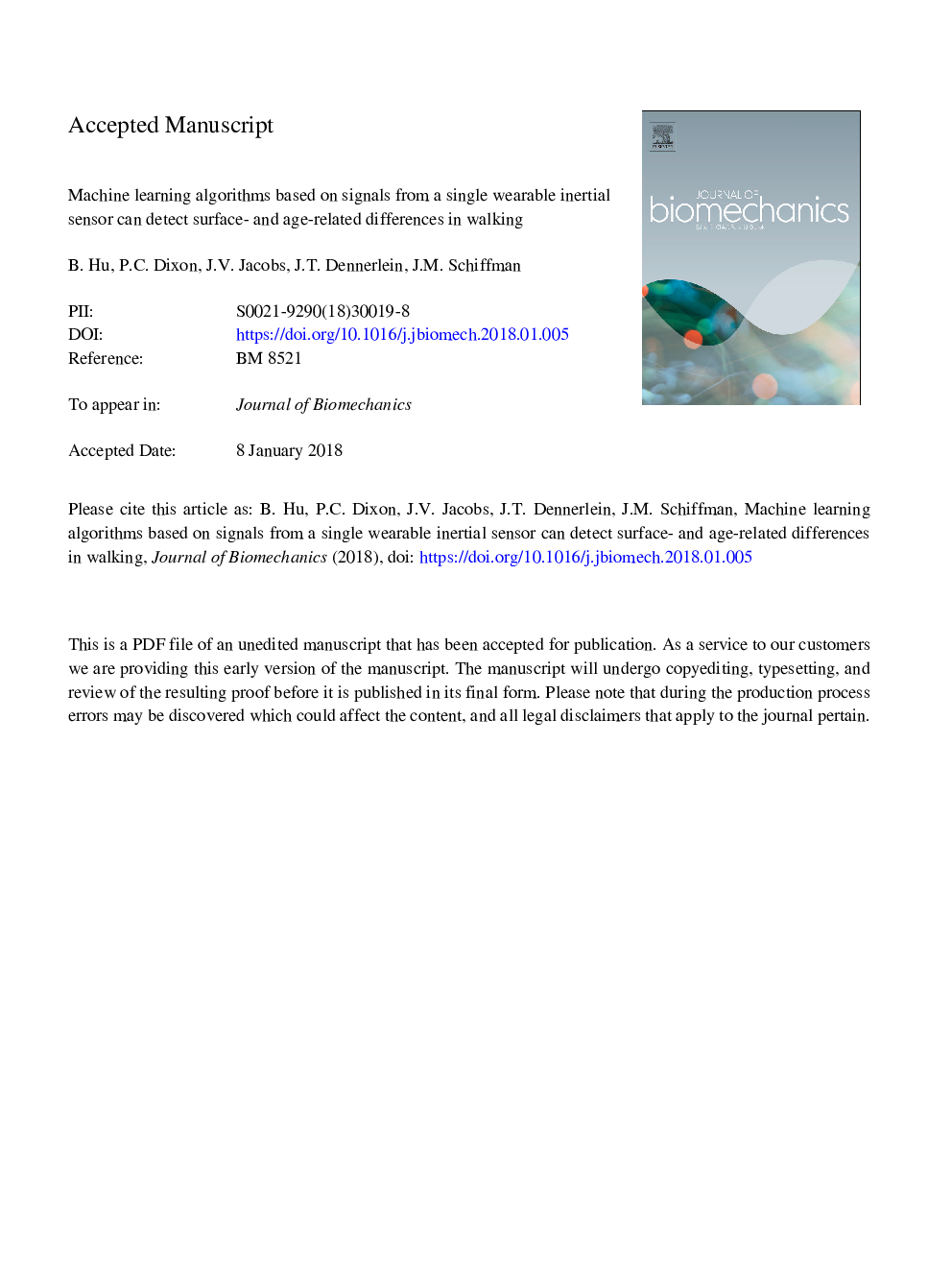| Article ID | Journal | Published Year | Pages | File Type |
|---|---|---|---|---|
| 7236407 | Journal of Biomechanics | 2018 | 22 Pages |
Abstract
The aim of this study was to investigate if a machine learning algorithm utilizing triaxial accelerometer, gyroscope, and magnetometer data from an inertial motion unit (IMU) could detect surface- and age-related differences in walking. Seventeen older (71.5â¯Â±â¯4.2â¯years) and eighteen young (27.0â¯Â±â¯4.7â¯years) healthy adults walked over flat and uneven brick surfaces wearing an inertial measurement unit (IMU) over the L5 vertebra. IMU data were binned into smaller data segments using 4-s sliding windows with 1-s step lengths. Ninety percent of the data were used as training inputs and the remaining ten percent were saved for testing. A deep learning network with long short-term memory units was used for training (fully supervised), prediction, and implementation. Four models were trained using the following inputs: all nine channels from every sensor in the IMU (fully trained model), accelerometer signals alone, gyroscope signals alone, and magnetometer signals alone. The fully trained models for surface and age outperformed all other models (area under the receiver operator curve, AUCâ¯=â¯0.97 and 0.96, respectively; pâ¯â¤â¯.045). The fully trained models for surface and age had high accuracy (96.3, 94.7%), precision (96.4, 95.2%), recall (96.3, 94.7%), and f1-score (96.3, 94.6%). These results demonstrate that processing the signals of a single IMU device with machine-learning algorithms enables the detection of surface conditions and age-group status from an individual's walking behavior which, with further learning, may be utilized to facilitate identifying and intervening on fall risk.
Related Topics
Physical Sciences and Engineering
Engineering
Biomedical Engineering
Authors
B. Hu, P.C. Dixon, J.V. Jacobs, J.T. Dennerlein, J.M. Schiffman,
